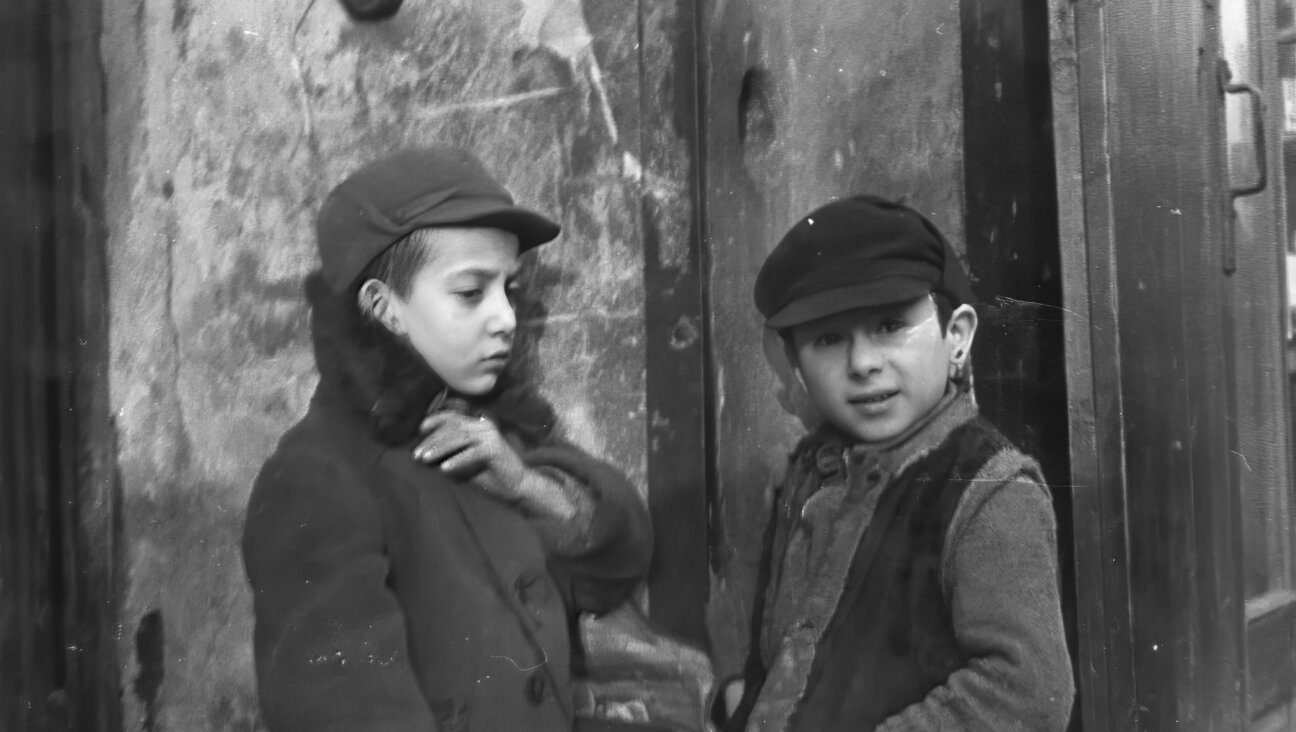How Many American Jews Are There?

Graphic by Angelie Zaslavsky
Anyone wishing to understand the shifting realities of American Jewish life has reason to celebrate this month. After a four-year hiatus, the American Jewish Year Book is back in print.
This is no small thing. Begun in 1899, the annual volume was for 108 years the essential source of facts and figures on Jewish community life. Each year, it served up population data, major events of the past year, groundbreaking social analysis and a nifty catalog of all those bewildering Jewish organizations and institutions. Each year’s volume is a snapshot in time. Browse through several in a row, and you’ll see a flow of history that no one-volume narrative can capture.
Unfortunately, it was discontinued by the publisher, the American Jewish Committee, during the 2008 economic crash. It left a vacuum the Internet can’t fill. The yearbook was a reality check. It didn’t bridge the community’s divisions, but it got us arguing from the same set of facts.
The new edition, edited by a pair of social scientists and published by a European scientific press, should thus be a red-letter day for Jewish knowledge. And it is, mostly. The catalog of organizations is better than ever, with new lists of Jewish websites, summer camps and more. There’s also a lengthy, eye-opening study of Jewish secularism.
But the publication is also a cautionary moment. It spotlights new schisms in our basic perceptions of Jewish reality. There’s no longer a single set of facts. The new book reflects that.
Most jarring is the section on Jewish population. It’s the heart of the book, fully one-fourth of its 600 pages, and it offers two main conclusions. The first is that the best scientific estimate of America’s Jewish population is 6.722 million, although that’s probably wrong, mostly because of double-counting college students and snowbirds.
The real number is probably between 6.0 million and 6.4 million. (So 6.722 million is scientific but wrong? Go figure.) The second is that American Jews actually number 5.4 million, and anyone who thinks the total is above 6 million doesn’t know what he’s talking about.
The first total, 6 to 6.7 million, appears in an article titled “Jewish Population in the United States, 2012,” written by the book’s editors, Ira Sheskin of the University of Miami and Arnold Dashefsky of the University of Connecticut. They reached their figures, they explain, through a mixture of methods, mainly combining local surveys from scores of communities around the country, along with informed estimates by local leaders in hundreds of other communities, plus some U.S. Census information. Their article includes charts and maps showing Jewish population by state, region and in each of some 900 communities around the country.
They note that their total is much higher — by 1.5 million — than the widely publicized 5.2 million total published in the 2001 National Jewish Population Survey, conducted by what’s now called the Jewish Federations of North America. To understand the gap, they refer readers to an article in the 2006 American Jewish Year Book by the respected Israeli demographer Sergio DellaPergola.
The second figure, 5.425 million, appears in the new book’s next article, “World Jewish Population, 2012,” by the same Sergio DellaPergola. He explains that his total for the United States, part of a worldwide total of 13.7 million, is based on that 5.2 million figure from 2001, corrected for known errors and then adjusted for a decade of births, intermarriages and more.
He notes that the 2001 total was lower than the 5.5 million found in a 1990 population survey. That means Jewish numbers are declining. He cites several other national surveys with similar results. Studies with higher estimates, including Sheskin-Dashefsky and an innovative Brandeis University study, are “implausible,” “unreliable” and “not tenable.”
Here’s what neither article tells you. First, the 2001 population survey was a fiasco. It was conducted in 2000 but not released until 2002, following a series of inside and outside investigations into its known problems. These included lost data and flawed questionnaires.
The outside investigation, by the head of the prestigious American Association for Public Opinion Research, found at least two dozen serious methodological errors, most of them pointing toward an undercount. The published survey said the actual total was probably closer to 5.8 million. It also noted that its methods were different from those used in 1990, and therefore no comparison was possible — meaning no decline should be read into it.
The headlines, of course, all talked about 5.2 million Jews, down from 5.5 million a decade earlier. Nobody read the fine print.
The other big news that didn’t get reported from the 2001 survey was that it revisited the best-known factoid from the 1990 survey, that Jews were intermarrying at an annual rate of 52%, and concluded it was wrong. Scholars had begun questioning it soon after its initial release, and the noise from within the academic community eventually led to the 2001 reexamination. The combination of the two embarrassments — the repudiation of the 1990 survey’s best-known finding plus the utter mess of 2001, led to the federation body quietly dissolving its population research unit and quitting the survey business.
Yearbook 2012 also neglects to mention that the Sheskin-Dashefsky findings are matched by several other studies, all based on different basic methodologies. The city-by-city tally had appeared in the yearbook for years and kept showing increases from the year before, generally matching other surveys. Only after the 1990 intermarriage figure prompted predictions of decline did the city-by-city and national surveys start to diverge. By 2002 the gap was embarrassingly close to a million. In 2005 the yearbook dropped the city-by-city tally and went with DellaPergola’s world Jewish population charts. Shortly after, AJC quit the yearbook business.
Behind the confusion are certain new discoveries that are changing our understanding of how Jews view themselves but aren’t fully absorbed into survey methodology. For one, several studies have shown that a significant percentage of Jews — nearly 4% — deny they’re Jewish when strangers ask directly. New interview methods engage them in conversation before raising the J-word, resulting in sharply higher population figures.
Second, there’s a growing, still unmeasured tendency among children of intermarriage to identify as Jewish, perhaps because it’s fashionable in Washington and Hollywood.
Third, growing numbers identify strongly as cultural or secular Jews but non-believers. They won’t show up in a survey that asks their religion.
What difference does it all make? Plenty. Religious conservatives have a stake in proving that intermarriage threatens the Jewish future. Some political conservatives want to discredit the broader liberal agenda of full integration in an open society. For them, clinging to the old surveys is important.
DellaPergola is a different matter. He is Israel’s leading expert in Jewish demography, universally liked and respected by his peers, and is a central figure in virtually every major discussion or decision on relations with the Diaspora. Colleagues decribe his dead-end commitment to a discredited doctrine of American Jewish decline as an eccentricity, but some are beginning to express alarm over its impact. “Sergio,” Sheskin told me, “wants to be able to say that more Jews live in Israel than in America.”
Contact J.J. Goldberg at [email protected]















